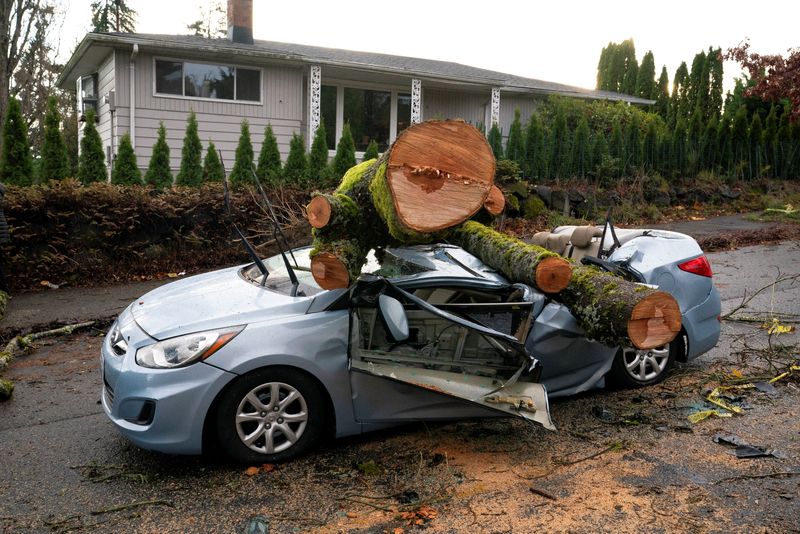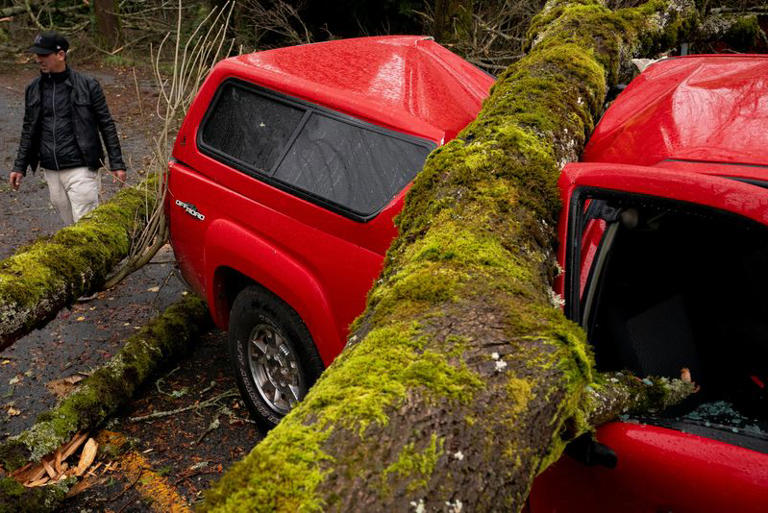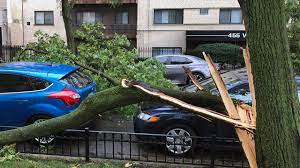A devastating storm system pummeled the Pacific Northwest Wednesday, claiming two lives, cutting power to more than half a million customers, and prompting widespread emergency responses across Washington state before moving southward toward California.

The system, characterized by tropical-storm-force winds reaching 50 miles per hour with gusts up to 70 mph, proved deadly when a tree crashed onto a homeless encampment in Lynnwood, north of Seattle, killing one woman. A second fatality occurred near Seattle when a falling tree struck a home in Bellevue. Two additional people suffered injuries when a tree collapsed onto their trailer in Maple Valley, southeast of Seattle.
Power outages affected more than 530,000 homes and businesses across Washington, southwest Oregon, and Northern California, down from 600,000 earlier, according to Poweroutage.us. The storm’s impact extended into Canada, where British Columbia’s BC Hydro reported approximately 100,000 customers remained without power Wednesday morning, primarily on Vancouver Island, after initial outages affected 225,000 customers.

“Trees are coming down all over the city & falling onto homes,” Bellevue’s fire department warned on social media. “If you can, go to the lowest floor and stay away from windows. Do not go outside if you can avoid it.”
The severe conditions forced school closures throughout western Washington and prompted the Snohomish Regional Fire & Rescue service to urge residents to remain indoors amid widespread reports of downed trees and power lines.
Weather experts warn the region faces additional challenges as the system, termed a “bomb cyclone” due to its rapid intensification, moves toward California. “The storm is just beginning,” said Rich Otto, a National Weather Service meteorologist at the Weather Prediction Center in College Park, Maryland. Forecasts predict up to 20 inches of rainfall in parts of southwestern Oregon and northern California by Friday.

A bomb cyclone occurs when a storm system intensifies rapidly within 24 hours as polar and tropical air masses collide, a process meteorologists call bombogenesis. The National Weather Service has issued multiple warnings across the Pacific Northwest, including blizzard alerts from northern Washington to the Sierra Nevada Range.
State transportation officials cautioned motorists about hazardous driving conditions as fallen trees and severe weather continued to impact traffic throughout the region.
Reuters



